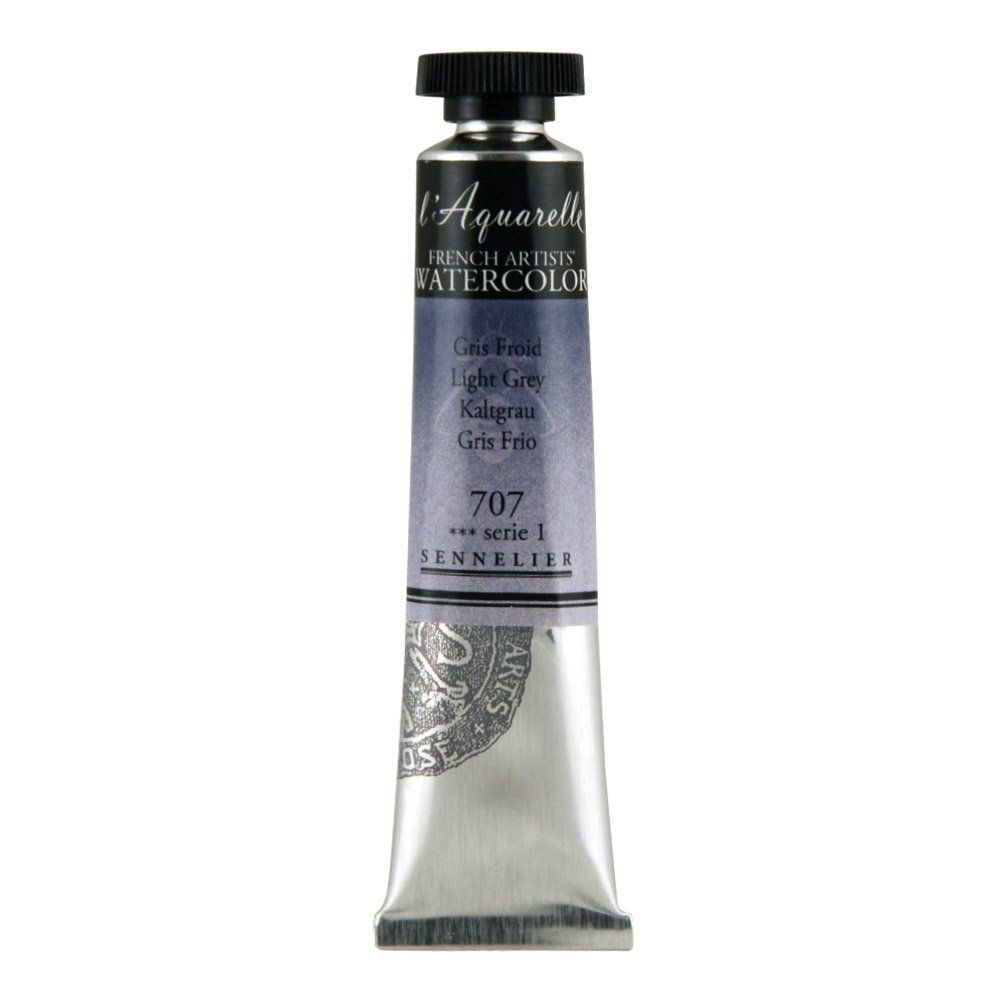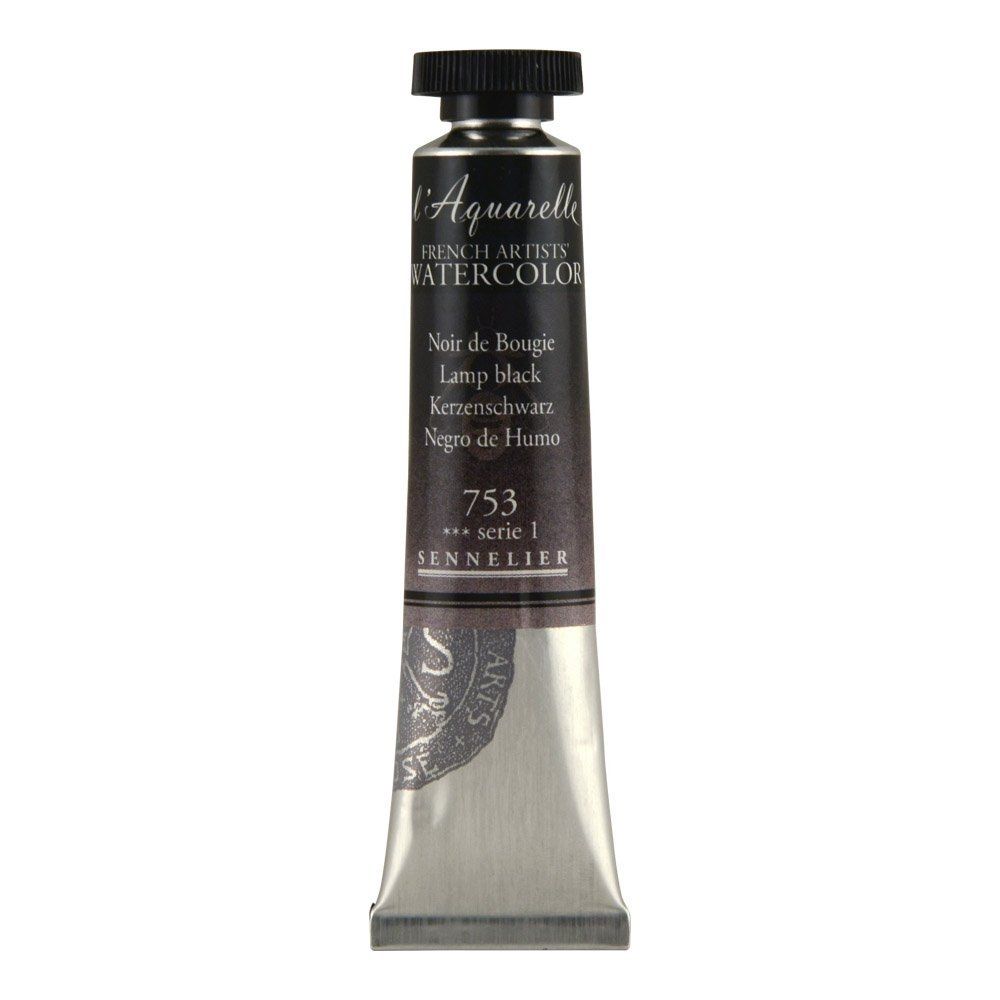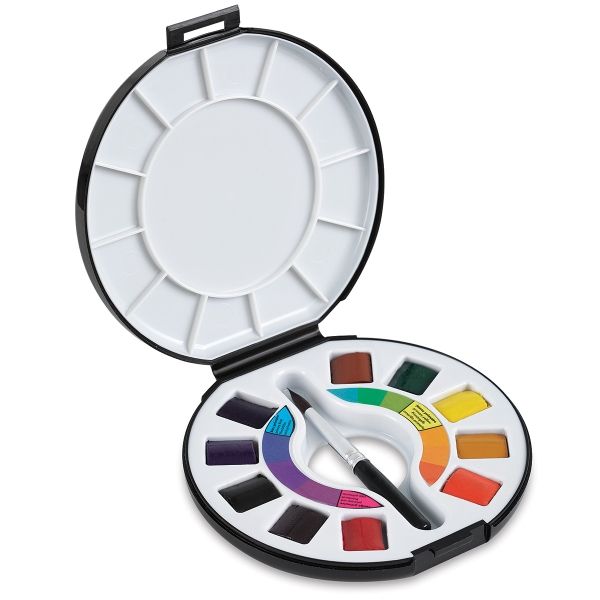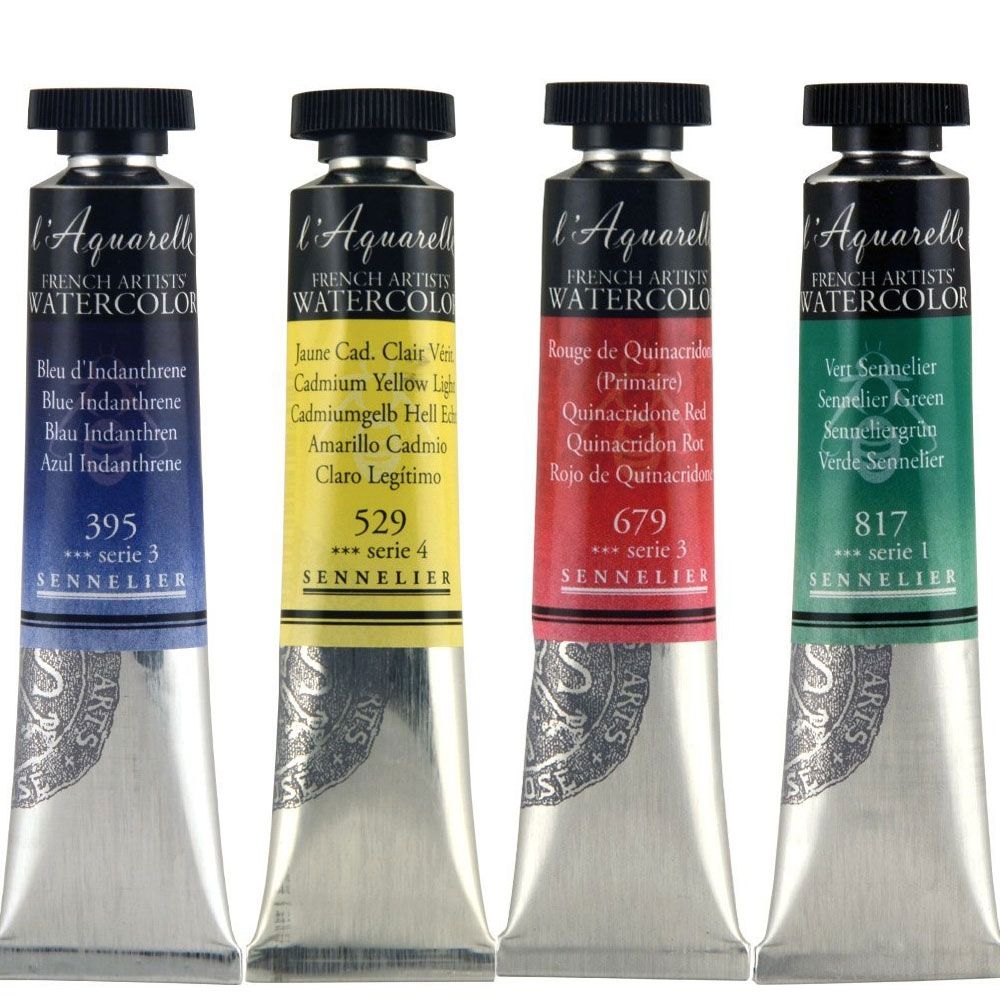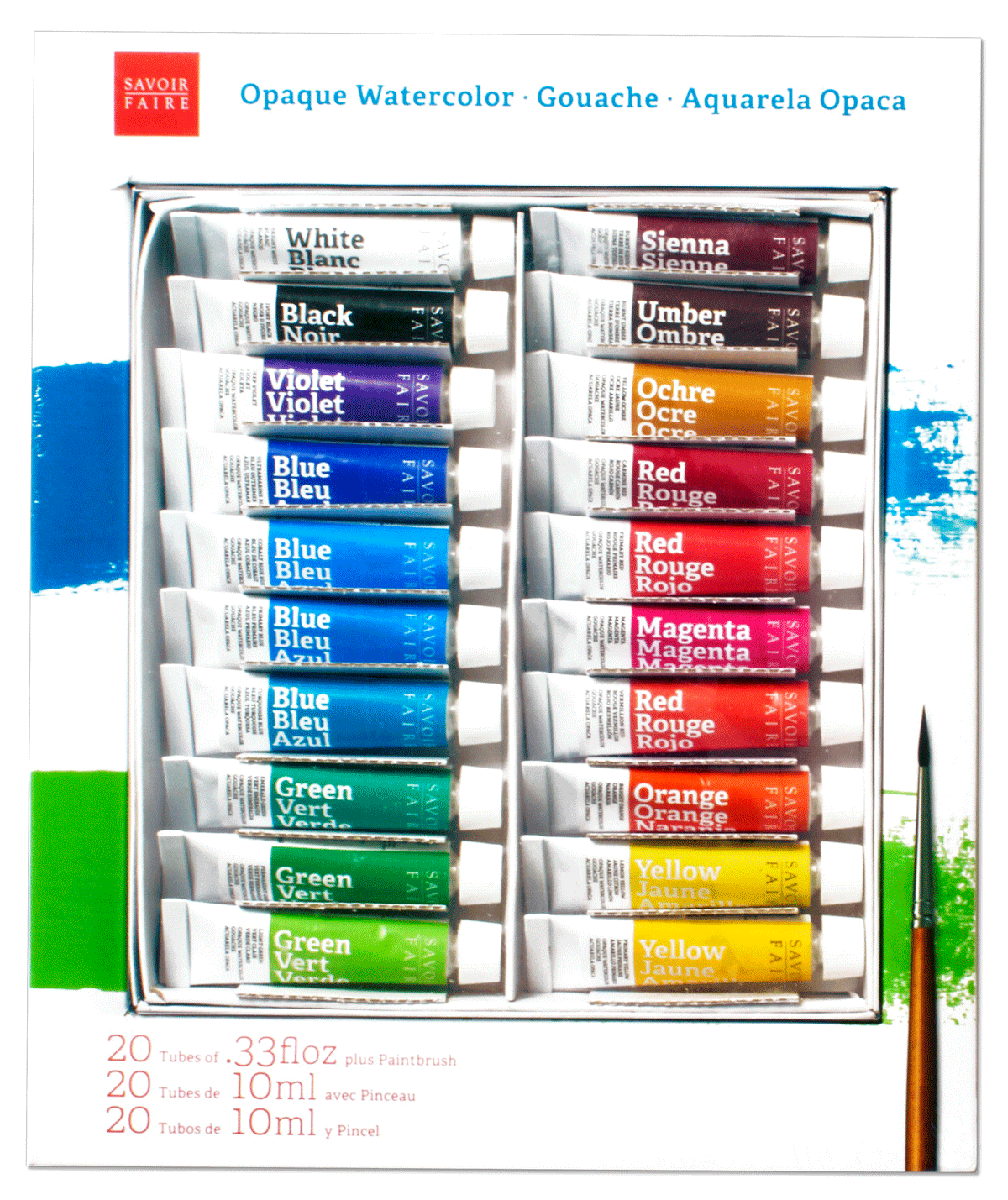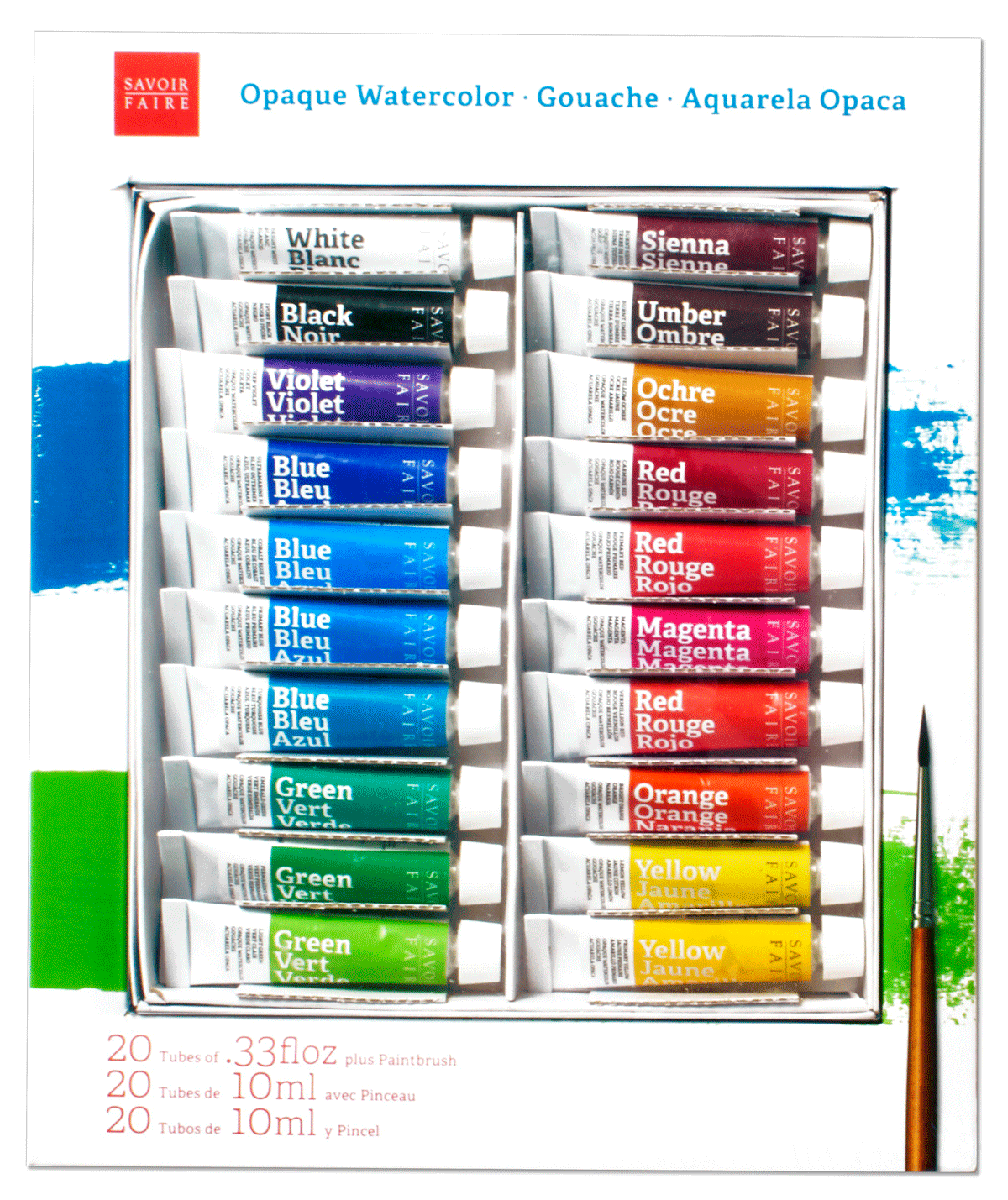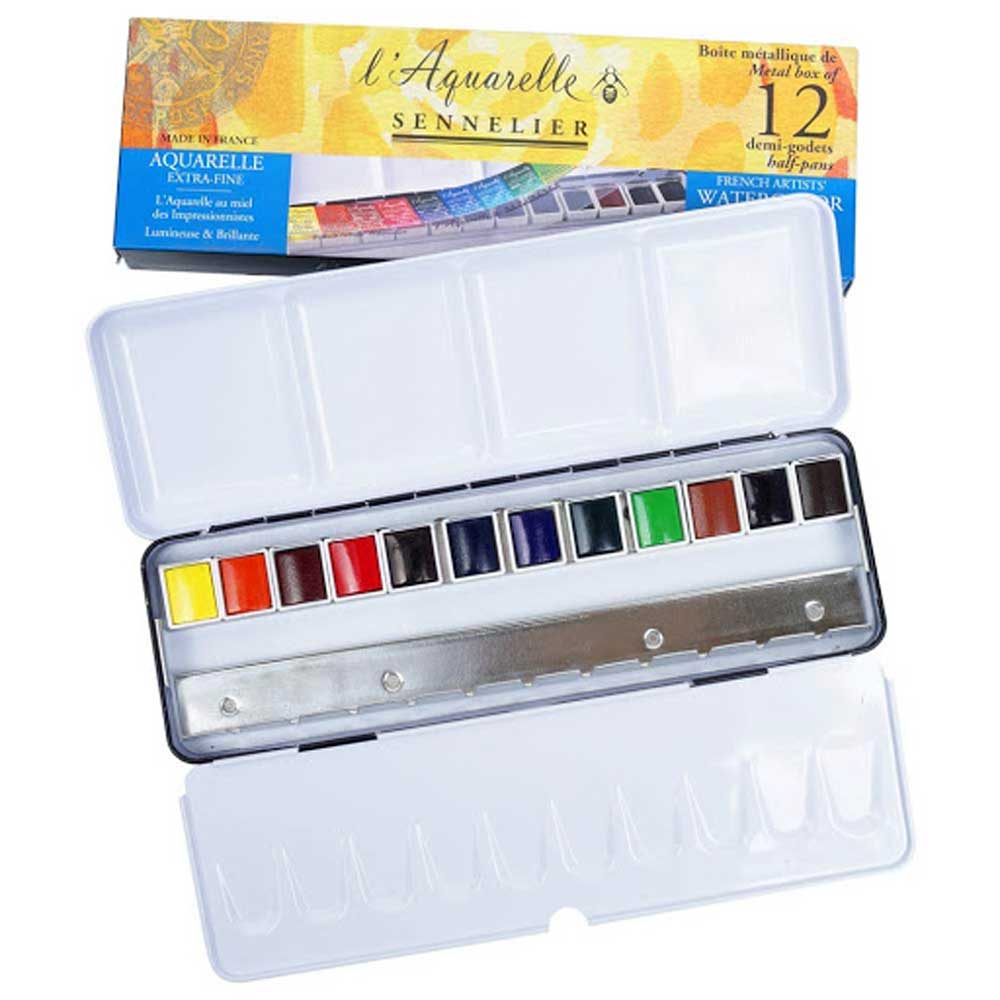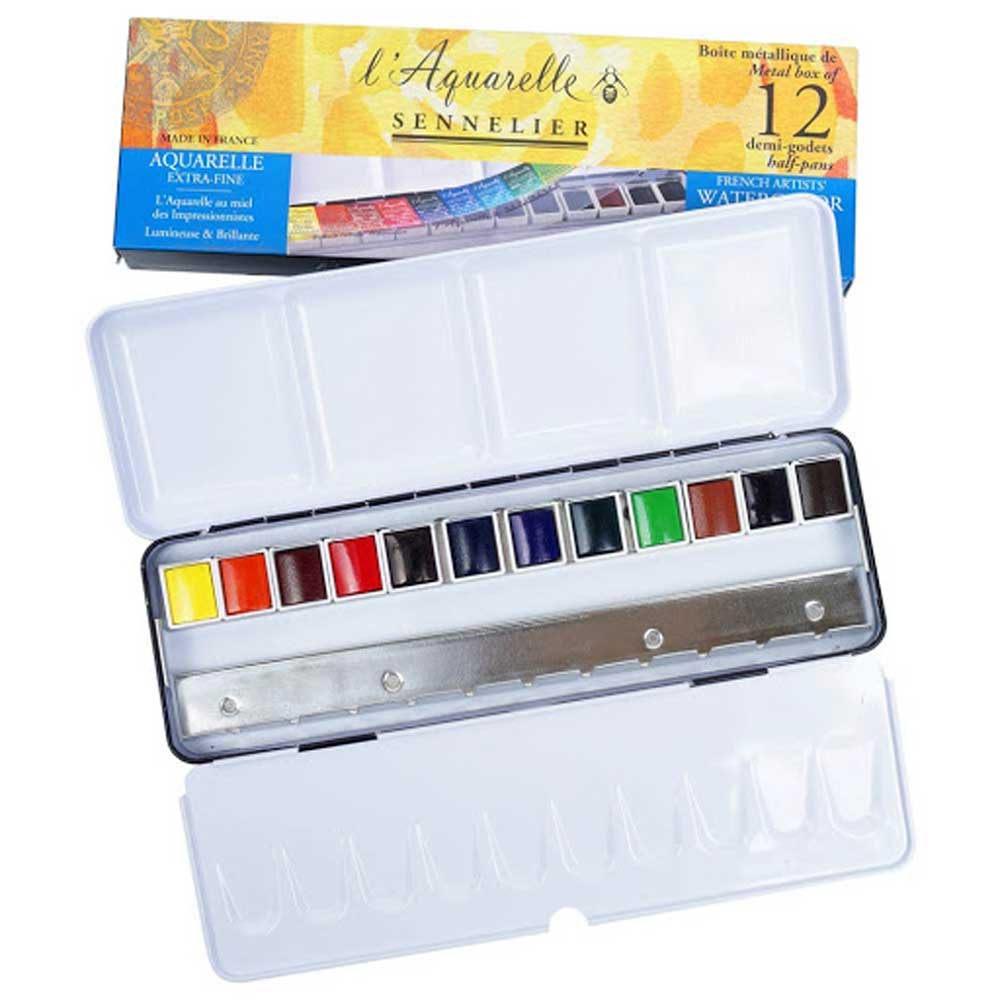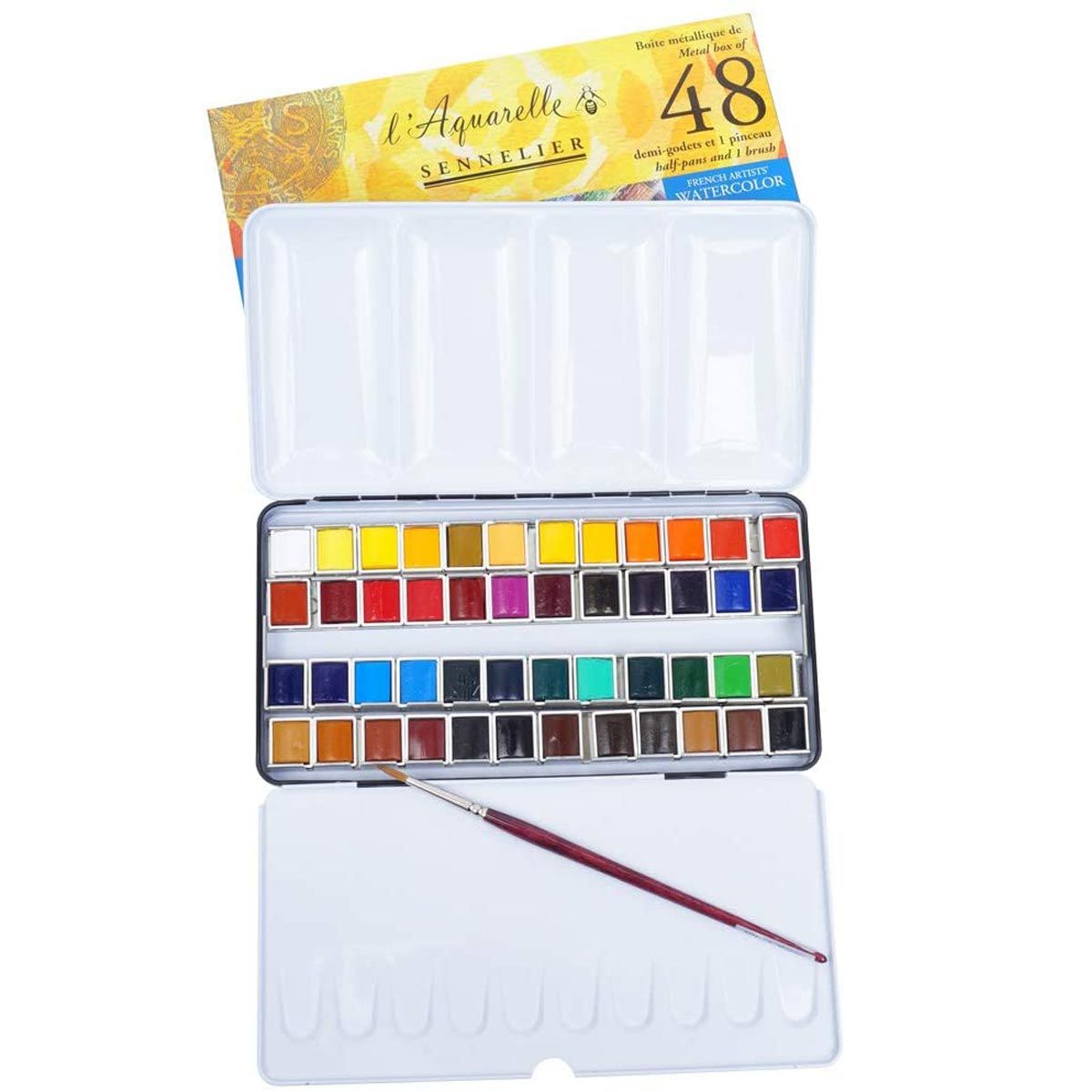Sennelier Watercolour S1 Light Grey (707) 21 ml
Light Grey-C95 (707) Lamp black is an opaque, heavily staining black pigment with little covering or tinting power. It is typically the opaquest black in watercolour form. Though a very pure black, it tends to muddy slightly in mixtures. Titanium White is the most brilliant of the white pigments, and semi-opaque is in watercolour form. Ultramarine is the standard warm blue, a brilliant blue pigment with the most purple and least green in its undertone. It has a moderate to high tinting strength and beautiful transparency and tends to produce clean, though granular, washes in watercolour. French Ultramarine mixes well with Alizarin watercolour form to create a range of purples and violets.
- Pigment Name: PBk7—Lamp Black: PW6—Titanium White: PB29—Ultramarine [Blue]
- Pigment Type: PBk7-PW6-PB29-Inorganic
- Series: 1
- Opacity: Transparent/Opaque
- Permanence/Lightfast: (1) ***
Sennelier Watercolour S1 Light Grey (707)
Light Grey-C95 (707) Lamp black is an opaque, heavily staining black pigment with little covering or tinting power. It is typically the opaquest black in watercolour form. Though a very pure black, it tends to muddy slightly in mixtures.
Titanium White is the most brilliant of the white pigments, and semi-opaque is in watercolour form.
Ultramarine is the standard warm blue, a brilliant blue pigment with the most purple and least green in its undertone. It has a moderate to high tinting strength and beautiful transparency and tends to produce clean, though granular, washes in watercolour. French Ultramarine mixes well with Alizarin watercolour form to create a range of purples and violets.
PBk7 Lamp Black is an opaque, heavily staining black pigment with little covering or tinting power. It is typically the opaquest black in watercolour form. Though a very pure black, it tends to muddy slightly in mixtures. Natural sources may be brownish or bluish in tone because of impurities. When used in oil paints, it is one of the slowest drying pigments and should not be used in underpainting or applied in layers underneath other colours. Chemical Name: carbon
Permanence: Lamp Black is very lightfast and permanent. It is used in all techniques in permanent painting.
Toxicity: Carbon itself is not considered hazardous; however, other hazardous combustion products are often present as impurities when Lamp Black is produced from natural materials. For this reason, commercial preparations of the pigment should be considered slightly toxic. Avoid skin contact and inhalation. Where such impurities are present, Lamp Black is a possible human carcinogen.
History: Lamp Black is a carbon-based black traditionally produced by collecting soot (known as lampblack) from oil lamps. It has been used as a pigment since prehistoric times. It is the black found in Egyptian murals and tomb decorations and was the most popular black for fresco painting until the development of Mars Black.
Alternate Names: Carbon Black, Channel Black, Furnace Black, Oil Black, Vegetable Black. Flame Black is an impure version of Lamp Black. An alternate spelling is Lampblack, in which the first syllable is stressed, and the two words are elided to form a closed compound.
PW6 Titanium White is the most brilliant of the white pigments. It is considered an all-purpose oil colour useful in all techniques and the best all-around white. Its masstone is neither warm nor cool, placing it somewhere between Lead White and Zinc White. It is less prone to cracking and yellowing than Lead White, but it still yellows easily. Titanium White dries slowly in oil form, more slowly than Lead White but more quickly than Zinc White. It is opaque in oil and acrylic forms and semi-opaque in watercolour form. This pigment has good chemical stability, and its tinting strength is superior to both Lead White and Zinc White. Chemical Name: titanium dioxide
Permanence: Titanium White has excellent permanence and lightfastness.
Toxicity: Titanium dioxide is highly stable and is regarded as completely non-toxic. Animal studies do not indicate that it is absorbed biologically, even after long periods of exposure. The primary safety concern is with the inhalation of fine pigment dust particles. If inhaled in large amounts over the course of several years, Titanium White may cause a benign pneumoconiosis that is visible on x-rays. The National Institute of Occupational Safety and Health (NIOSH) considers fine titanium dioxide particles, if inhaled, to be human carcinogens. Artists' primary concern is avoiding exposure to fine particulate dust from raw pigments.
History: Titanium is the ninth most abundant element in the Earth's crust. However, mineral deposits that are economical to mine are less common. Titanium dioxide was first discovered in 1821, although it could not be mass-produced until 1919. Widespread use of the pigment began in the 1940s. Since that time, it has become the most commonly used white pigment. The name comes from the Latin word Titan, the name for the elder brother of Kronos and ancestor of the Titans, and the Greek word tito, meaning day or sun.
Alternate Names: None.
PB29 Ultramarine [Blue] is the standard warm blue, a brilliant blue pigment with the most purple and least green in its undertone. It has moderate to high tinting strength and beautiful transparency. Synthetic Ultramarine is not as vivid a blue as natural Ultramarine. Ultramarine dries slowly in oil and produces clean, though granular, washes in watercolour. French Ultramarine mixes well with Alizarin colours in oil and watercolour form to create a range of purples and violets. It can dull when mixed with white in acrylic form but mixes well with other colours. The shade varies based on the manufacturer. Considered a great colour for glazes, it is not suitable for frescoing.
Permanence: Ultramarine has excellent permanence, although synthetic Ultramarine is not as permanent as natural Ultramarine. It may discolour if exposed to acid because of its sulfuric content.
Toxicity: Ultramarine has no significant hazards.
History: The name for this pigment comes from the Middle Latin ultra, meaning beyond, and mare, meaning sea, because it was imported from Asia to Europe by sea. It is a prominent component of lapis lazuli and was used on Asian temples starting in the 6th century. It was one of the most expensive pigments in 16th century Europe, worth twice its weight in gold, and so was used sparingly and when commissions were larger. Ultramarine is imitated by a process invented in France in 1826 by Jean Baptiste Guimet, making blue affordable to artists and extending the range of colours on their palettes.
Alternate Names: Artificial Ultramarine, French Blue, French Ultramarine, Gmelin's Blue, Guimet’s Blue, Permanent Blue, Royal Blue, Synthetic Ultramarine. New Blue describes particular shades of Ultramarine. Armenian Blue and Lazuline Blue are named for genuine Lapiz Ultramarine. Sky Blue is a pale tone of Ultramarine.
| Size | 21 ml |
|---|---|
| Brand | Sennelier |
| Country of Manufacture | France |
| Type of Store Credit value | Select |










